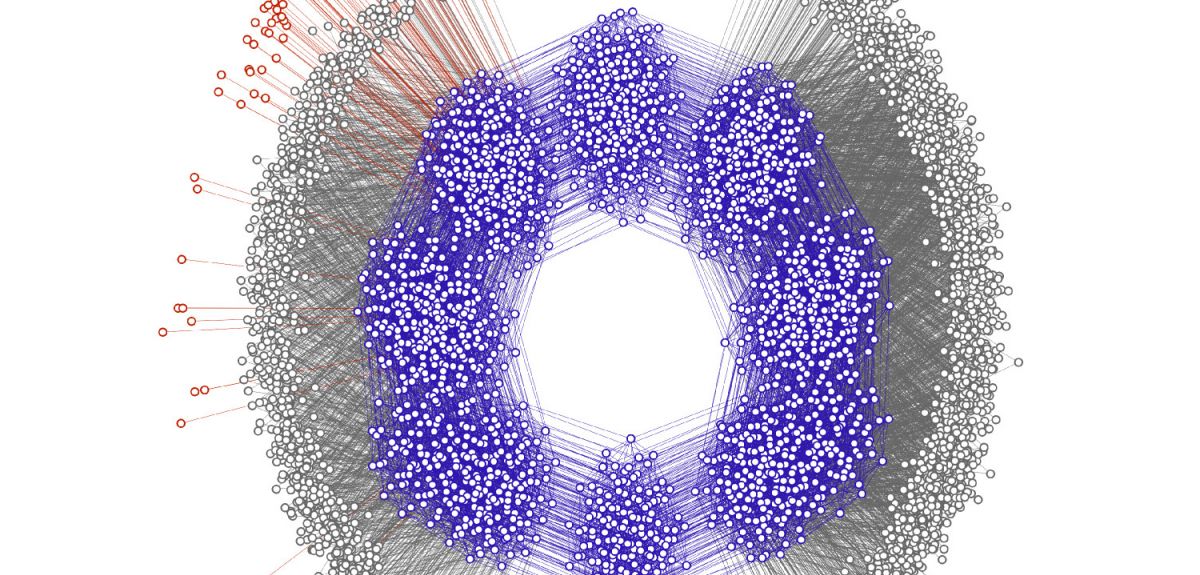
Evolution: quantity over quality?
When you think about evolution, 'survival of the fittest' is probably one of the first things that comes into your head. However, new research from Oxford University finds that the 'fittest' may never arrive in the first place and so aren’t around to survive.
By modelling populations over long timescales, the study showed that the 'fitness' of their traits was not the most important determinant of success. Instead, the most genetically available mutations dominated the changes in traits. The researchers found that the 'fittest' simply did not have time to be found, or to fix in the population over evolutionary timescales.
The findings suggest that life on Earth today may not have come about by 'survival of the fittest', but rather by the 'arrival of the frequent'. The study is published in the journal PLOS ONE and was funded by the Engineering and Physical Sciences Research Council.
I caught up with the study's lead author Dr Ard Louis, Reader in Theoretical Physics at Oxford University, to find out more.
OxSciBlog: How do your results challenge current popular theory?
Ard Louis: We are arguing that some biological traits may be found in nature not because they are fitter than other potential traits but simply because they are easier to find by evolution. Darwinian evolution proceeds in two steps. Firstly, there is variation: due to mutations, different members of a population may have differences in traits. Secondly, there is selection: if the variation in a trait allows an organism to have more viable offspring, to be 'fitter', then that trait will eventually come to dominate in the population. Traditional evolutionary theory focuses primarily on the work of natural selection. We are challenging this emphasis by claiming that strong biases in the rates at which traits can arrive through variation may direct evolution towards outcomes that are not simply the 'fittest'.
OSB: What can mathematical models tell us about biological processes?
AL: Evolution is perhaps the field of biology where mathematics has been the most successful. For example, it was mathematically trained biologists like R. Fisher, J.B.S. Haldane and S. Wright who first worked out how to combine Mendelian genetics, which Darwin didn’t know about, with Darwinian evolution. Today, very sophisticated population genetic calculations are routinely used, for example, to work out how cancer evolves in a patient’s body.
Of course one always needs to be careful because these models inevitably include simplifying assumptions in order to make them tractable. In our calculations we include difference in rates of the arrival of variation, something not traditionally taken into account in population genetics. But our models so far only apply to fairly simple examples of molecular evolution. Much more work is needed before we could claim that these effects are also important for more complex phenomena such as the evolution of animal behaviour.
OSB: How do your calculations match up with real-world observations?
AL: We predict, for example, that RNA molecules that are more robust to the effect of mutations should naturally arise from our 'arrival of the frequent' effect. RNA can act both as an information carrier and as a catalyst, and so is thought to be very important for the origin of life on earth. It has been known for some time that RNA found in nature is remarkably robust to mutations and we can now provide a population genetic explanation of this phenomenon.
OSB: How have field biologists reacted to these results?
AL: On the one hand, biologists who work on evolution and development have not been so surprised because they have long argued that developmental processes can bias organisms to evolve in certain directions over others. Others have reacted with some caution, which is probably wise given the potentially far-reaching nature of our claims. I think we have raised a lot more questions that we have answered.
OSB: Did the results come as a surprise to you?
AL: On the one hand they didn't, in part because I have long been interested in Monte Carlo simulation techniques which have many parallels to evolution. There, biases in the arrival of variation are well known to affect outcomes. But I was very surprised to find that the biasing effect could be so enormously strong, making it robust to such a wide range of different evolutionary parameters.
OSB: How did your group come to study evolution?
AL: We specialise in statistical physics, and there are many beautiful parallels between evolutionary dynamics and processes in the everyday physical world. In my group we have worked for many years on self-assembly; how individual units can form well-defined composite objects without any external control. Biology is full of amazing self-assembled structures, and so we began asking: how do these structures evolve in the first place?
 Tamiflu: an analysis of all the data
Tamiflu: an analysis of all the data MeerKAT is shape of things to come
MeerKAT is shape of things to come How short is your time?
How short is your time?